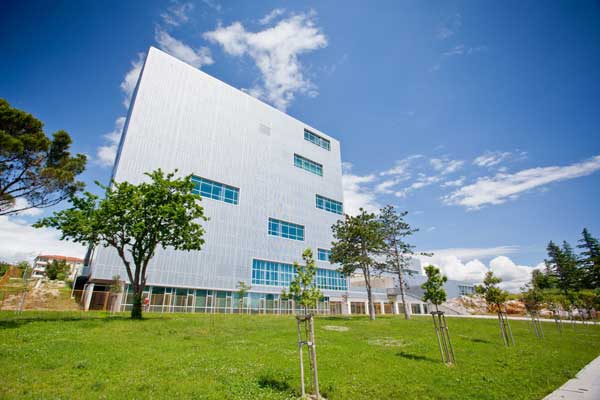Month: February 2016
Make Your City More Attractive
Posted by Retail Attractions Blog on February 17, 2016 in Blog | 1 Comment
Most cities have the potential for retail growth. While this fact offers hope for cities wondering if they have anything to offer investors, it also means there’s a lot of competition from other communities. Since there’s potential for retail development in many locations, you need to make your community stand out to developers.

Prepare in Advance
Developers don’t want to waste time talking with communities that aren’t ready to welcome new retail development. Before you start marketing your community, know what you have to offer. Lay the groundwork for building public/private partnerships that benefit both the community and the investors.
This starts as a mindset – city governments must take the lead in fostering an attitude that economic development is key to survival and growth. Other practical steps to take include assembling land for development and providing the public infrastructure needed to support new commercial developments.
Offer Innovative Incentives
Most retail development that takes place today involves some type of incentive. As you’re preparing to market your city to potential developers, take a good look at what your city can offer them. This often involves action on the part of the community, such as the extension of sewer, water, and other utilities to a development area.
Other incentives include waiving fees or negotiating tax breaks. Tax increment financing (TIF) can be used to finance redevelopment and community improvement projects. Your community could choose to offer payment in lieu of taxes (PILOT) deal to limit or defer the property taxes on a developer. A less common incentive would be sales tax deferral on construction.
Present Useful Data
In its raw form, data isn’t that helpful when marketing your community. It’s not the developer’s job to make sense of the raw numbers – it’s yours. The responsibility for presenting data in a useful form falls on the community.
Data is useful once it has been proven, validated, and categorized. If you want to catch retailers’ attention with your data, the best option is to have an independent third party do the analysis. Having Retail Attractions present your community’s information in a professional format lets retailers know you’re serious about working with them.
Streamline Development
Developers are more likely to invest in a community that they know will support them. Going to them with locations ready for development and an incentive plan is a good start. Having a trusted third-party compile and analyze data increases the likelihood that your community will attract attention.
Now you need to demonstrate that your community will follow-through on what you’ve promised. Make your city known for being a community that “gets things done,” by following through on your promises and addressing developers’ concerns in a timely fashion. During the negotiation phase and development process, make the developers’ involvement as pain-free and efficient as possible.
Are you ready to take the next step in attracting new developers to your city? Contact Retail Attractions today.
Understanding Retail Development Incentives
Posted by Retail Attractions Blog on February 3, 2016 in Blog | 3 Comments
We often mention the importance of offering incentives to retail developers who are looking at your city. As of 2012, 89% of all retail growth in a local setting has some type of incentive. If you’re trying to attract new retail development to your city, you have to understand what type of incentives developers are looking for and what your city can do to market itself.
Incentive Examples
Tax exemptions or abatements, waiver of fees, sales tax rebates, tax credits, grants and loan guarantees are the most common incentives offered to new developers. They’re a good way to attract interest from developers, and likely to result in a win-win situation for both city and developer. Here are a few real-life examples:
- To construct a supermarket in an under-served part of Washington DC, developers received sales tax exemption for construction materials and equipment, and personal and property taxes were exempted for ten years.
- A suburban city encouraging downtown retail development waived all building and permit fees up to 2 percent of construction cost.
- A location near a metro city offered retailers investing $5 million or more, with annual sales of $30 million or more, 50 percent of city sales taxes for five years and rebate of all development fees.
- A suburban city investing in facade upgrades downtown provided grants to cover 75 percent of costs up to $4,000.
Other Incentives
When you’re thinking about incentives, don’t forget that ease of development can be just as attractive as saving money. To make your city a better location for new development, take steps to provide the needed infrastructure even before you start marketing your city. Make sure the roads, signage, sewage and water systems are ready to handle new retail growth. Assemble land that you can present for development. The goal is to make the development process as pain-free as possible for retailers.
Create A Plan
When you’re deciding what initiatives your city should offer, you have to take into account both the retailers’ needs and your own. You’ll need to define who’s eligible for the incentives and how much you’ll offer, establish performance standards and monitoring policies, and perform cost/benefit and rate of return analysis. You’ll also decide whether you’re going to offer across-the-board incentives, or negotiate them deal-by-deal.
If this sounds overwhelming, Retail Attractions can help. We have extensive experience working with cities and retailers. We know what you need to offer to attract attention from good developers, and how to protect your city’s interests as well. Contact us today to request more information or to schedule a consultation.
